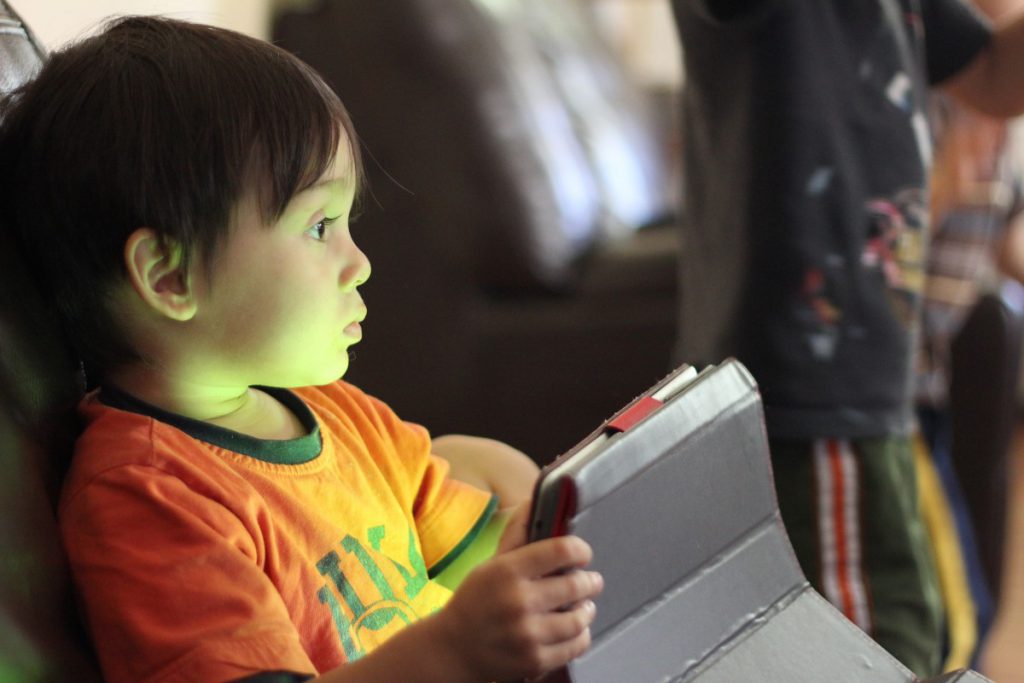Internet Predators
- Intro
- What should children know before they ‘step into’ the digital world?
- Who are Internet predators?
- How do Internet predators recruit victims?
- How to protect a child from an Internet predator?
- Technical skills children need to adopt before they start communicating on digital devices
- How do you know the child is in contact with an Internet predator?
- Who should you contact for help?
Internet Predators
Author: Dobrinka Kuzmanović, PhD

The Internet is a powerful communication tool, enabling us to establish and maintain contacts with people from all over the world, collaborate, socialize and exchange information and experiences.
In Internet communication, participants may remain anonymous (at least for some time, though in most cases it is possible to determine their true identity), thus making it easier for malicious people to misuse this kind of communication.
When it comes to children, the first steps in the digital world are made exclusively in the presence and with the active support of an adult who has the appropriate digital skills. Preschool children, according to experts’ recommendations, should not use digital devices and the Internet independently or use them for communication (except in the presence of adults).
Intimidation and banning the use of digital devices are not considered appropriate measures of parental protection of children on the Internet. By disabling their online access, you prevent children from adopting important digital skills. However, this does not mean that children should be allowed to use digital devices independently before they learn to walk, sit on a potty, read, write…
The fact that a child can read and type on the keyboard or is able to unlock the digital device independently or find a previously-watched video (after attempts and mistakes), does not mean that he/she will be able to communicate over the Internet safely or to deal with messages sent by malicious people.
Before you give your child a digital device, you should think carefully and decide whether it is the right time for that (whether the child is intellectually, emotionally and socially mature).
Provide the child with the appropriate skills for safe communication over the Internet before he/she ‘steps into’ the digital world and becomes a stand-alone user of digital devices.

What should children know before they ‘step into’ the digital world?
- The digital world is a real world; online experience is inseparable from that gained outside it. The same applies to digital communication: it is real communication, although it takes place on digital devices.
- All rules that apply in live communication also apply to communication in the digital environment (e.g. we choose who we communicate with and which personal information to share with others; we stop communicating with people who send us offensive, inappropriate or vulgar messages; we seek help from adults or people we trust, etc.)
- Web services we use for communication have access to our personal information, private messages, photos, contacts, etc.
- Establishing contacts with strangers on the Internet, as well as accepting any information others communicate online (especially if we do not know these people outside the Internet) is considered unsafe or risky behaviour.
- Malicious people who initiate communication in a digital environment usually have the ultimate goal of meeting someone in person.
Who are Internet predators?

Internet predators are malicious people who use the Internet to establish contact with others, most often children, for the purpose of various forms of abuse and sexual exploitation.
- There is no clear profile of an Internet predator; most of them are male adults.
- The age, level of education, occupation and motives of an Internet predator vary from case to case, though some common characteristics are observed in their behaviour and the manner in which they recruit potential victims.
How do Internet predators recruit victims?
Recruitment on the Internet consists, as a rule, of several steps:
- The first step is to collect information about a potential victim. Internet predators visit various sites on the Internet (profiles on social networks, blogs, forums, chat rooms) in order to gather as much personal information about the victim as possible: age, gender, physical appearance, place of residence, personality traits, interests, hobbies, people with whom a child communicates and contents of the communication.
- After enough information about a potential victim is collected, it is followed by the next step: initiating communication with the child.
- When communicating with potential victims, Internet predators almost never reveal their true identity; they pretend to be someone else, most often peers (similar age and interests), they hide behind false names, nicknames, photographs, etc.
- Upon making a contact, as a rule, they ask general and not too personal questions, make jokes or otherwise try to entertain and win a potential victim and establish a ‘friendly relationship’ with the child.
- As soon as they get ‘closer’ to the victim, they start asking more direct questions: which device the child communicates from (personal or shared with someone), where the device is located, whether the child is alone in the room or at home, where the adults are, what time the parents are present, etc.
If an ‘Internet friend’ stops conversation or correspondence with the child as soon as he learns that the child is not alone in the room or at home, or that parents/adults have an insight into the child’s current online activity, this might indicate that the ‘friend’ is actually an Internet predator!
- Internet predators try to show themselves in the best possible light. They show readiness to listen and understand, discuss important topics and current issues (relationships with peers and adults) and seem to provide unreserved support. They usually offer gifts, praise selflessly, tell the victim what they think he/she wants to hear and take the child’s standpoints.
- When they gain the victim’s trust, they begin to show their ‘real face’, they start to manipulate and control the child’s behaviour. They may insist on getting accurate information about what the victim is doing, where the child resides, who he or she is hanging out with, but also show indignation and anger if they do not receive the information requested.
- Internet predators usually ask the victims to send their photos or videos without clothes on, or in some provocative posture. They often send their photos as well (or the ones they claim to be theirs), videos, links with explicit sexual content, and then ask the victim to delete them in order “not to have problems if someone sees it”, they teach the victim different sexual techniques – all they do is covered with a veil of mystery!
If an ‘Internet friend’ insists on turning on the camera on the child’s device asking the child to show parts of his/her naked body, or the whole body, (though he never does the same on his device), this might indicate that the ‘friend’ is actually an Internet predator!
- When they come into possession of personal content, Internet predators blackmail the victim: they ask for more and more information, threatening to otherwise disclose, forward or make public the information they already have. Even more seriously, they request to meet the victim in person.
How to protect a child from an Internet predator?
Bear in mind that children who meet strangers on the Internet and communicate with them online may become easy targets for Internet predators!
In order to protect your child from malicious contacts, observe the age restrictions of different Internet services. The General Data Protection Regulation prescribes new, stricter rules on age restrictions, child protection and the provision of parental consent for use of these services by children.
Considering the fact that many studies (both domestic and international) confirm that children have profiles on social networks long before they reach the prescribed age, it is very important to draw the child’s attention to:
- share personal information on the Internet only with close people (the same he/she does in everyday life, outside the Internet)
- always check who communicates using the Internet (whether a person has an active profile, how many friends he/she has, what kind of photos are posted, whether those photos can be found on other websites, whether there are mutual friends…)
- stop communication whenever he/she feels uncomfortable or frightened, block a person
- save messages or photos that might serve as proof
- never receive gifts from strangers
- not respond to violent, persistent, or any other suspicious messages or calls
- share negative experiences with others, without being ashamed or afraid; always seek help from an adult he/she trusts – among family members, or in an educational institution.
The publication How to Defeat an Internet Predator in 10 Steps is intended for children who want to learn how to protect themselves from Internet predators.
Technical skills children need to adopt before they start communicating on digital devices
- How to make communication safer (when using chat services, e.g. Viber, there is the possibility of message encryption; this option is also available for a group chat)
- How to turn off the display of their location when exchanging messages
- How to block the phone number of a person sending inappropriate messages
- Where and how to report online harassment (almost all Internet services offer this option).
How do you know the child is in contact with an Internet predator?
- The child is secretive when it comes to his/her online activities
- spends more and more time online
- gets angry if there is no Internet access
- receives calls or he/she calls unknown people
- receives gifts or parcels from unknown people
- shows changes in behaviour, communicates less with family members and peers, isolates him/herself
- changes or stops activity on a digital device in the presence of an adult
- downloads pornographic content from the Internet …
Who should you contact for help?
Realizing that their child is a potential victim of an Internet predator may cause a flood of negative feelings in parents and provoke willingness to do their best to ‘solve the problem’ as soon as possible. However, we advise parents and other adults who take care of children that it is not good in such situations to ‘take the law into your own hands’ or to start communication with the Internet predator in order to ‘deal with him’. Rather, it is necessary to seek support and protection from competent institutions. In this way, we protect not only our own interests but also the interests of everyone in the public space, such as the Internet.

If you find out that your child is the victim of an Internet predator, contact and inform the police or the prosecutor’s office (you do not need to report both to the police and the public prosecutor, because in the event of a criminal offence the police inform the public prosecutor and vice versa) or the National Contact Centre (reports received by the Contact Centre are forwarded to the competent institutions, whenever the allegations from the report indicate the need for their inclusion).
It is also desirable to inform the educational institution the child attends, as well as your Internet service provider.
Here are the contacts of competent institutions:
- Technology Crime Department, Ministry of Interior of the Republic of Serbia:
email: vtk@mup.gov.rs and prijavipedofiliju@mup.gov.rs phone: + 381 11 306 2000
- Superior Prosecutor’s Office Belgrade, Technology Crime Department
address: Savska 17a; email: vtk@beograd.vtk.jt.rs phone: + 381 11 3601 272
- Municipal Public Prosecutor’s Office. The report is filed in the area of the public prosecutor’s office where the violence occurred; the list of the addresses of the municipal public prosecutor’s offices is on the website Free legal aid.
- National Contact Centre for Child Safety on the Internet
http://www.pametnoibezbedno.gov.rs phone: 19833




